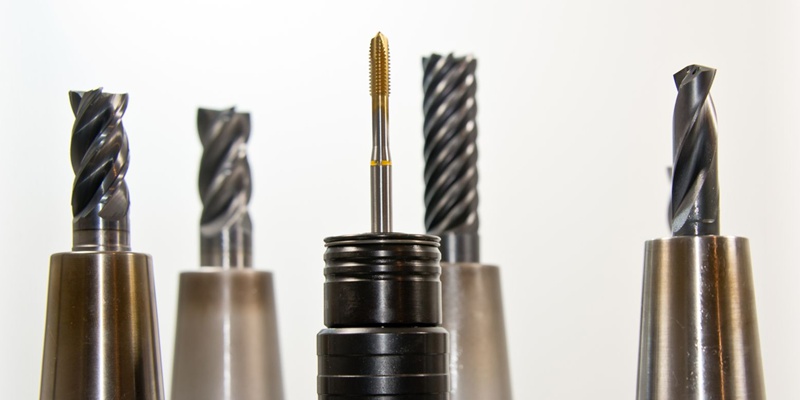- April 28, 2023
Reaming is an essential manufacturing process used by machinists to achieve precise sizing and finishing of drilled or bored holes. By using reamer tools, which are rotary cutting tools, machinists can enlarge holes with incredible accuracy, creating a perfect diameter with a smooth finish that’s hard to achieve through drilling alone.
The complex geometry of reamer tools allows them to efficiently remove material while delivering a smooth surface finish. This makes reaming an indispensable process for achieving high-quality results in industries like aerospace, automotive, and medical manufacturing, where precision and accuracy are critical.
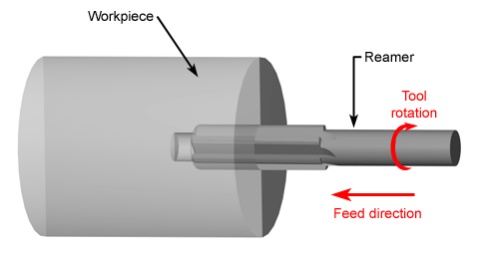
Some general applications of reamer tools are as follows:
- Automotive Industry: Sizing holes in engine bores, valve heads, and shafts.
- Aerospace: Precision holes in components like the body, fuselage, landing gear, etc.
- Fabrication: Precision machining holes for special fastener sizes and tapping.
- Assembly: Sizing holes for screws, nuts, rivets, etc.
Various Components of A Reamer
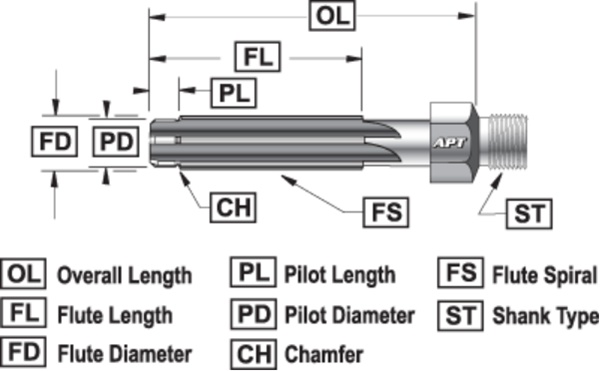
Reamers remove small amounts of material from the inside walls of the hole, resulting in a highly precise and uniform hole. The design of a reamer is complex and includes multiple components that play a critical role in the precision of the hole it produces.
- Axis: Just like milling tools, reamers are axially symmetric. The central axis is an important geometric feature as it is useful in defining tool offset and characterizing motion errors.
- Body: The portion of the reamer from its entering end to the beginning of the shank.
- Shank: The portion of the tool for holding and driving it.
- Flute Diameter: The maximum cutting diameter of the reamer bit, defining the final hole size.
- Flue Length: The length of the portion with cutting edges. It defines the tool’s cutting load and distribution.
- Overall Length: Total length of the tool, which restricts the hole depth for using the reamer.
- Back Taper: The reduction in diameter per unit length from the entering end to the other end. This taper allows for easier chip evacuation and load concentration at the front side of the tool.
Exploring Different Types of Reamers and Their Uses
Reamers are an essential tool for machinists seeking precise results in a variety of reaming applications. Despite their similar appearance, each type of reamer is uniquely crafted to excel in specific scenarios. Whether it’s a straight-flute reamer for through-holes or a spiral-flute reamer for blind holes, understanding the distinct characteristics of each type can make all the difference in achieving optimal performance.
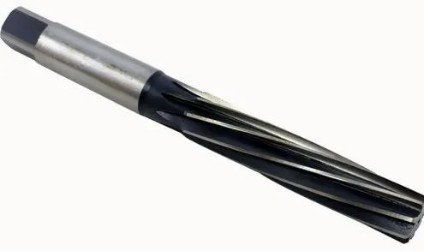
1. Spiral-Fluted Reamers
Spiral-fluted reamers are special-purpose reamers that are ideal for hard-chipping materials like stainless steel. Due to their helical flutes, the cutting forces are well-distributed over the hole reamer, allowing them to cut through hard materials.
Furthermore, the helical angle assists in evacuating the chips, which is essential when reaming blind holes.
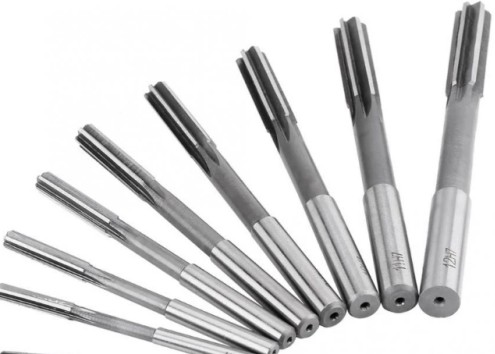
2. Straight-Fluted Reamers
Straight-fluted reamers, as the name suggests, have flutes that are parallel to the central axis of the reamer bit. They are suitable for materials that do not produce a lot of chips, such as brass and cast iron.
Since the flutes do not have an angle, chip evacuation can be an issue. For this reason, it is preferable to use them with through holes so the chips can simply fall through the bottom opening. Moreover, they are not suitable as a hand reamer owing to the same chip evacuation issue.
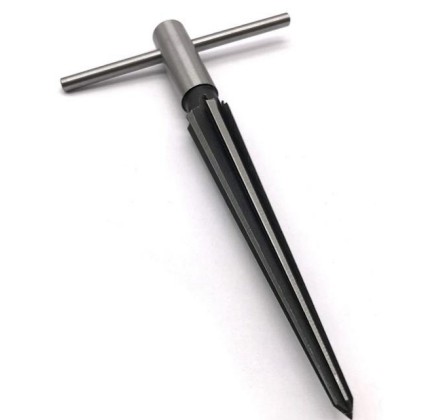
3. Taper Pin Reamers
Taper pin reamers feature a tapered body. This means that the diameter of the metal reamer decreases as one moves from the root to the tip along the central axis. This unconventional shape is perfect when the hole accommodates components like taper pins.
There are various sizes, materials, and taper angles of taper pin reamer tools. Generally, their main specifications include the root and tip diameters and the tool length.
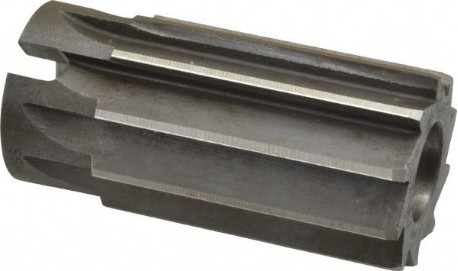
4. Shell Reamers
Shell reamers come as a sleeve with cutting flutes on the outside. The sleeve, or ‘shell’, is fitted onto a reaming arbor to perform the reaming operation. A usual shell reamer has multiple flutes spanning the entire length of its body and that can be straight or spiral, depending upon the application.
generally, shell reamers are suitable for larger holes, often greater than ¾”. Their convenient design makes them cheaper than other reamer tools and allows flexibility for engineers.
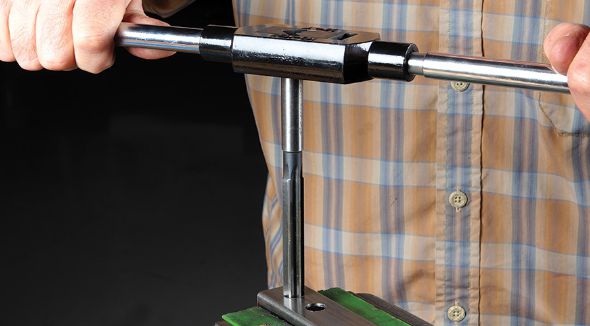
5. Hand Reamers
A hand reamer is designed for manual reaming, as opposed to a machine reamer, which is used on machine tools. Its design usually features helical flutes to facilitate chip evacuation and distribute cutting forces. Moreover, it also has a slight taper to assist the user in precisely inserting it into the hole.
Hand reaming is generally a bit less accurate than machine reaming due to human errors. Still, hand reamers are commonly found in fabrication shops and are one of the most important tools in a machinist’s toolbox.
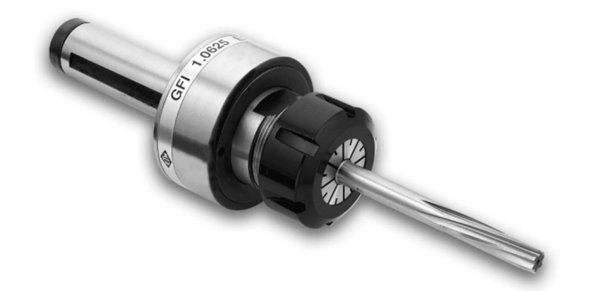
6. Floating Reamers
Floating reaming is more of a separate reaming setup than a reamer bit. So, these floating holders are compatible with all reamer types. The special thing about it is the floating reamer holder, which isolates the machine tool drive from the tool through an independent bearing setup.
In other words, it eliminates motion errors coming from the machine tool. These errors can include spindle misalignment, thermal expansion, and axial offset.
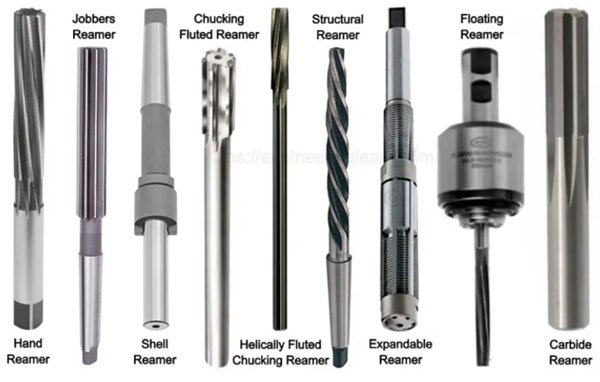
Other Reamer Types
The list of types of reamer above includes the most common reaming tools one can find inside a machine shop. On top of these, there are multiple other reamer types for specialized reaming operations. A comprehensive list of other reaming tools is as follows:
- Chucking Reamers
- Stub Screw-Machine Reamers
- Expandable Reamers
- Carbide Reamers
- Socket Reamer
Step-by-Step Guide on How to Use Reamers
Reaming, although quite common, is a specialized operation that requires skill and practice. Users should follow a proper procedure based on their reamer sizes, types, and job. A generalized step-by-step guide on how to use a reamer is given below to get you started.
1. Setup Preparation
The first step is to set up everything. The workpiece should be mounted using a vise or a clamp, whichever is more suitable. This stops the workpiece from moving under the action of cutting forces, which decreases the reaming precision and can even break the reamer tools.
2. Pilot Hole Marking
Once the workpiece is sturdily held in place, the hole drilling comes next. To begin, the operator marks the center of the hole using an appropriate marking device. Then the hole is spotted using a spot drill or countersink. This process helps guide the drill bit into the center of the hole in the next step.
3. Pilot Hole Drilling
Then, the drilling operation follows. Choosing the correct drill bit size is important at this step. A general tip is to use a drill bit 2-4% smaller than the final hole size. So, for example, if the final hole size is 10mm, a 9.8mm drill would be perfect.
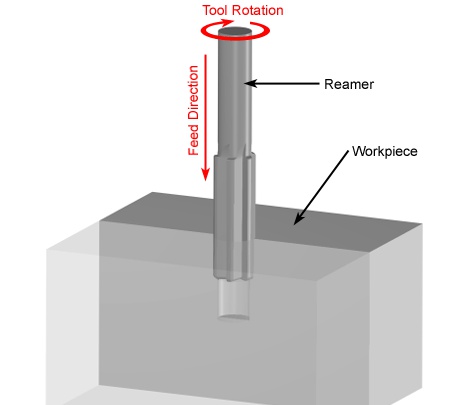
4. Reaming
Next comes the actual reaming process. The hole and the ream are both lubricated to minimize friction. Then, the reamer is mounted in its respective holder and aligned with the center of the hole.
The hole reamer is then gently guided into the hole. The slight chamfer at the entering end is useful in this process. Once inside the hole, the operator reams the hole using the selected feed and speed parameters.
5. Clean
The ream is periodically retracted from the hole for relubrication and chip evacuation until the hole is fully reamed. At the end of the process, the hole should be thoroughly cleaned. Care must be taken not to harm the internal walls.
Reamers vs Drill Bits vs Boring Tools: What are the Differences?
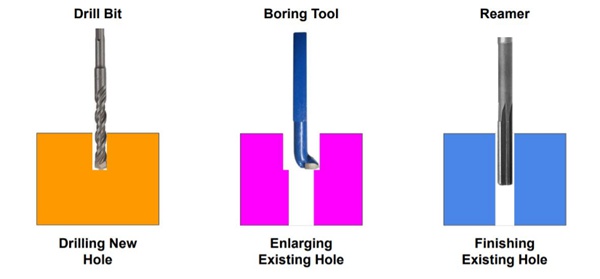
The differences between reaming, drilling, and boring are often confusing for machining novices. As experts, it is important to understand the significance of each machining process and its specialized tools.
Reamers vs Drill Bits
A drill bit is a cutting tool with helical cutting edges at its side and front ends. Their design allows them to have a large material removal rate. When drilling a hole, you need the drill bit to create a hole inside a completely solid material. Thus, before drilling, the job workpiece does not have a hole at all.
Just like drill bits, a metal reamer also has cutting edges (often helical), but only on the sides. Reaming is also a hole-making process, but reamer tools perform a different job of finishing the surface of an already drilled hole.
Moreover, their primary purpose, unlike drill bits, is to remove a very small amount of material and produce a very smooth surface finish.
Reamers vs Boring Tools
There is also some confusion between the reamer and boring tools. First, they are both cutting tools for finishing holes. First, they are both cutting tools for finishing holes and correspond to two types of hole machining operations, reaming and boring.
Boring is a hole-enlarging operation just like reaming. However, its main purpose is to remove material and not produce a fine surface. Its material removal rate is also much higher than reaming.
Moreover, the boring tool has a very distinct tool geometry with cutting edges only near its entering face rather than along its entire axis. For example, boring bars for lathe machine boring heads.
Final Thoughts
Reamer tools play a central role in efficient and accurate hole-making. There are different reamers for different reaming operations.
WayKen is a rapid prototyping and manufacturing company, offering a wide range of machining services including CNC machining, injection molding, and 3D printing. Our high-end machinery and talented team are well-suited to provide you with the best quality hole machining services. Feel free to contact us for consultation on your projects.
FAQ
How is reaming different from drilling and boring?
Reaming is a finishing process that is used to enlarge holes with high accuracy and create a smooth surface finish. They remove a maximum of 0.005” of material. Drilling creates a new hole altogether at a place where there was no hole previously. Boring is also a hole-enlarging process, but it removes much more material than reaming. Thus, it is not a finishing process like reaming.
What materials can reamers be used for?
Reamers are generally compatible with all metals ranging from soft materials like brass and iron alloys to hard materials like high-carbon steel and stainless steel.
How to choose the right ream size for a job?
The ream size should be 2-4% smaller than the final hole size. Thus, if the job specifies a 10 mm hole, the correct ream size would be in the range of 9.6-9.8 mm.

